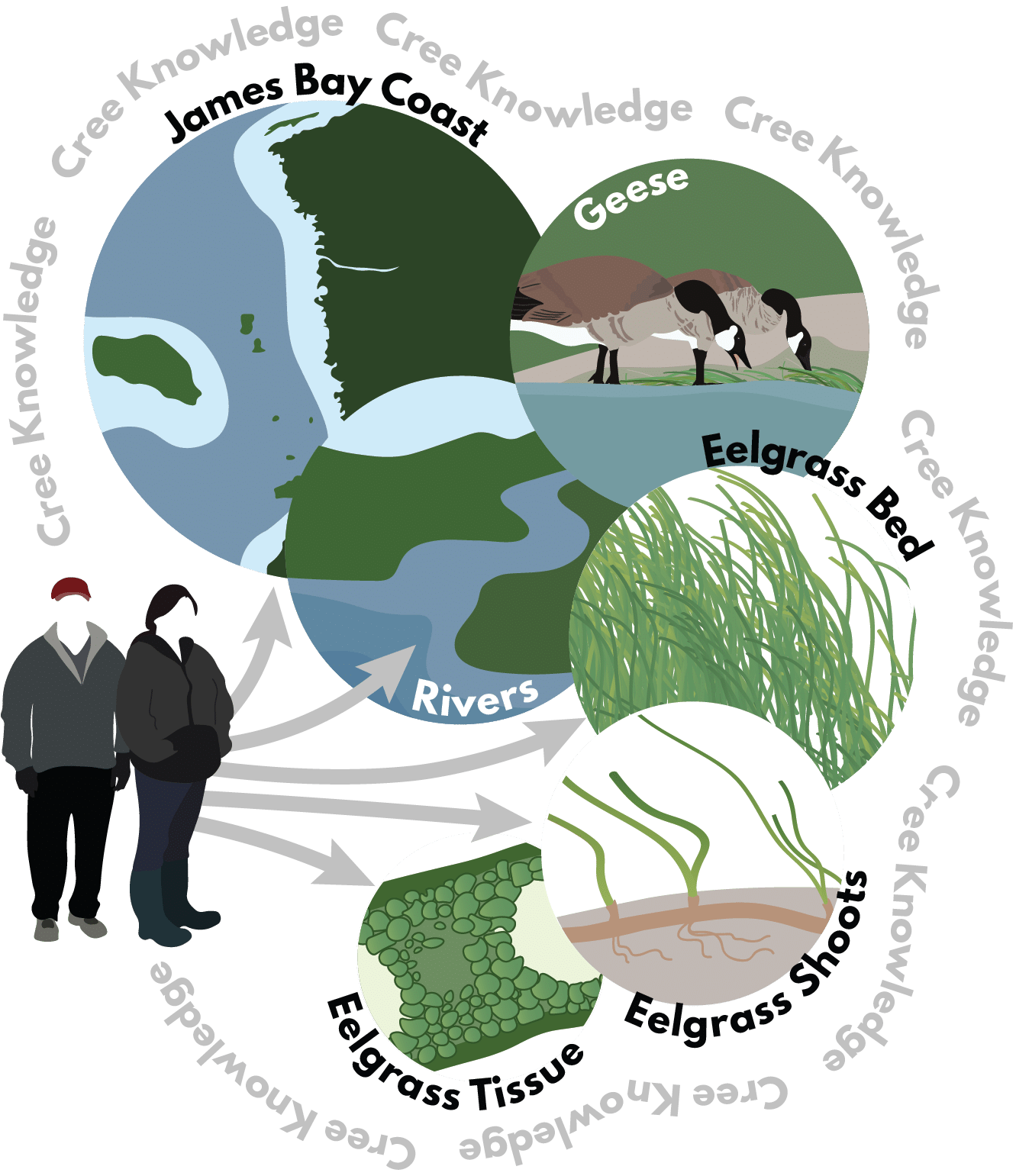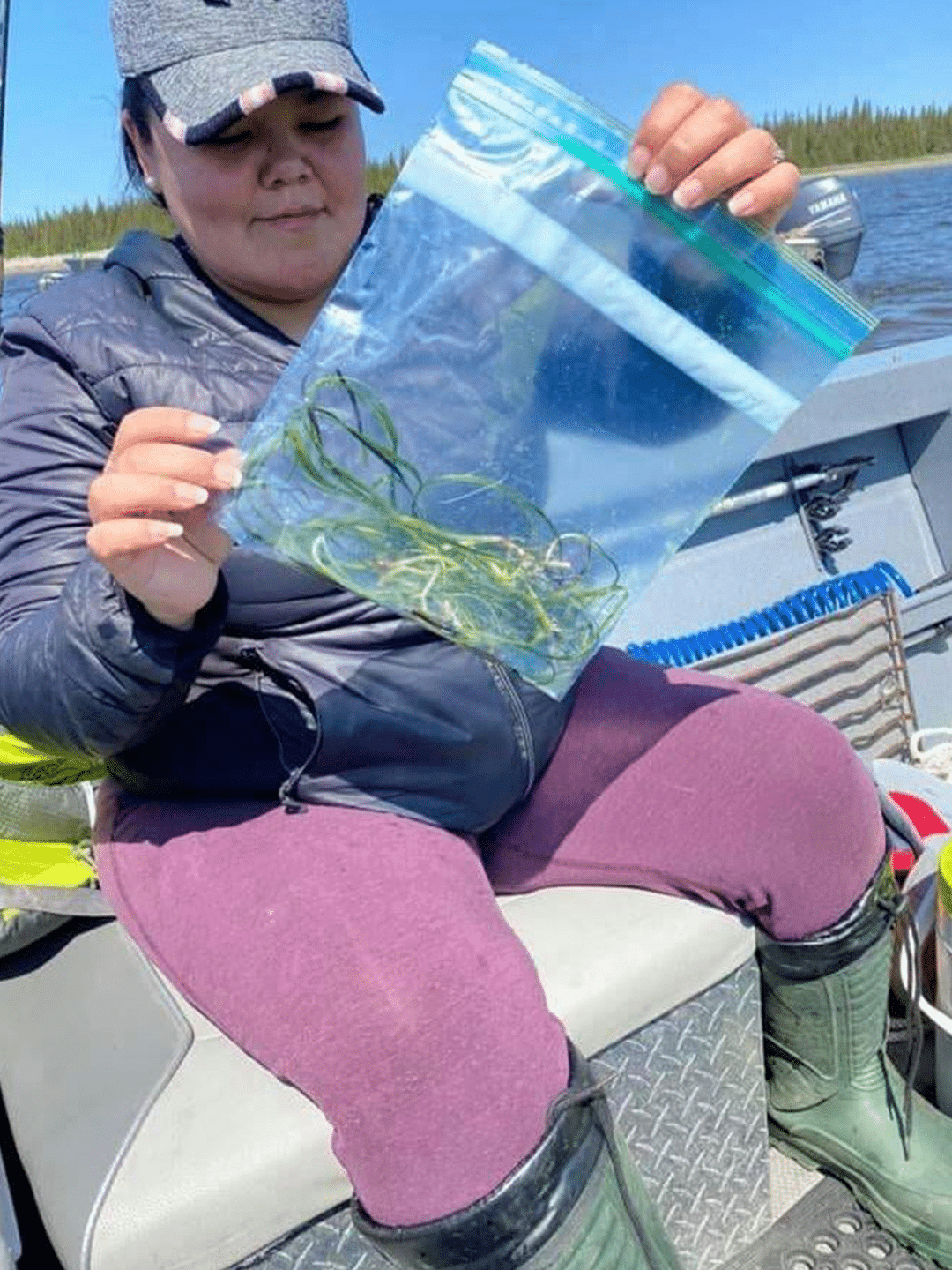Fieldwork and Community Engagement
Community engagement was crucial for fostering a more profound understanding, acceptance, and support for the research within the Cree coastal communities. Engaging with community members also facilitated knowledge sharing and increased researchers’ awareness of community priorities and concerns.
Community engagement was facilitated by the Niskamoon Local Officers (Geraldine Mark, Cassandra Weapenicappo and Ernest Moses) and Special Project Manager (Ernie Rabbitskin). From 2017 to 2021, more than 60 Cree land users from the four coastal communities participated directly in the research program. The Niskamoon Local Officers and Special Project Manager scheduled the fieldwork activities and arranged for the land users’ involvement on a daily basis, while bringing researchers up to speed on community history and sensitivities, and reporting how the communities perceived the researchers and research progress. The Niskamoon Local Officers also organized formal and informal activities in the communities including presentations, consultations, workshops, and interviews.












